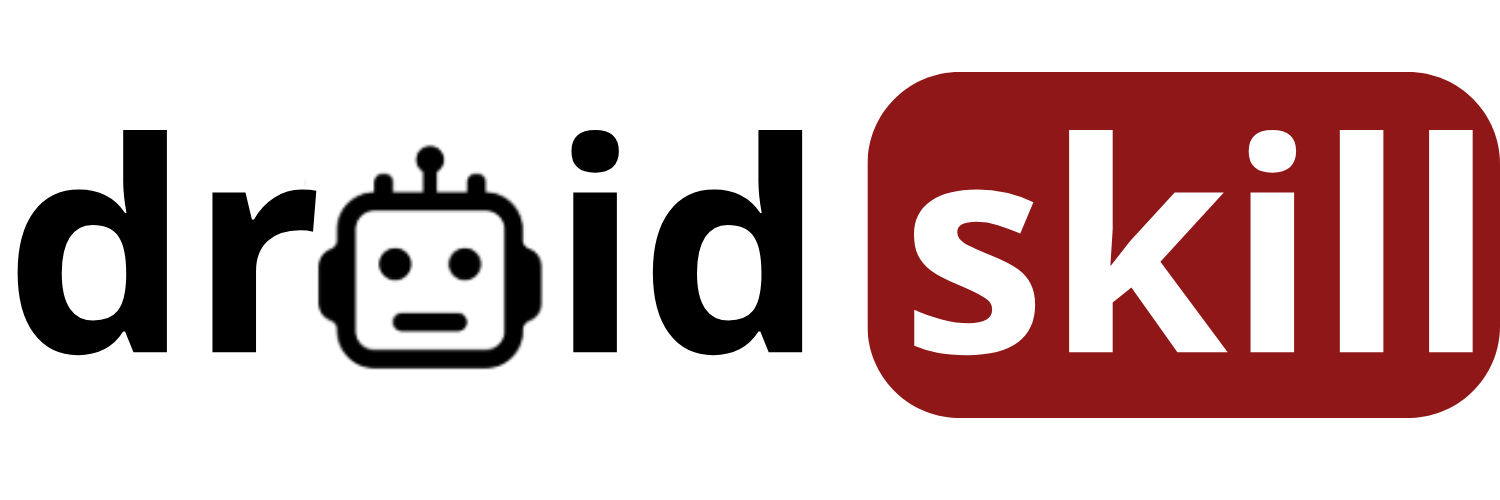Welcome to our comprehensive guide on maximizing your health using your Android device! In today's fast-paced world, staying healthy can be a challenge. But with the right tools and knowledge, your Android phone can become a powerful ally in your wellness journey. We'll explore essential tips, tricks, and app reviews to help you take control of your health and well-being.
Let's dive into some actionable strategies you can implement right away.
1. Google Fit
Google Fit is your all-in-one fitness tracker, seamlessly integrating with your Android device to monitor your activity levels. It automatically tracks activities like walking, running, and cycling, using your phone's sensors or connected wearables. You can set personalized goals, track your progress, and gain insights into your daily activity patterns. The app also integrates with other health and fitness apps, providing a holistic view of your health data.
Google Fit's user-friendly interface makes it easy to understand your activity metrics. You can view your steps, distance, calories burned, and active minutes at a glance. The app also provides personalized recommendations based on your activity levels, encouraging you to stay motivated and achieve your fitness goals. Plus, it's completely free and ad-free!
Download Google Fit from the Play Store
Search for Google Fit on Play Store
2. MyFitnessPal
MyFitnessPal is a comprehensive food diary and calorie counter that helps you track your diet and nutrition. With its extensive database of foods and recipes, you can easily log your meals and snacks, monitoring your calorie intake, macronutrient breakdown, and micronutrient levels. The app also provides personalized recommendations based on your dietary goals, helping you make informed food choices.
MyFitnessPal's barcode scanner makes it incredibly easy to log packaged foods. Simply scan the barcode, and the app will automatically populate the nutritional information. You can also create custom recipes and save your favorite meals for quick logging. The app integrates with other fitness apps, allowing you to track your calorie expenditure and maintain a balanced energy equation.
Download MyFitnessPal from the Play Store
Search for MyFitnessPal on Play Store
3. Headspace
Headspace is a leading meditation and mindfulness app that helps you reduce stress, improve focus, and enhance your overall well-being. The app offers a wide range of guided meditations, sleep stories, and mindfulness exercises, catering to all levels of experience. Whether you're a beginner or an experienced meditator, Headspace provides the tools and resources you need to cultivate a calmer and more mindful life.
Headspace's bite-sized meditations make it easy to incorporate mindfulness into your daily routine. You can choose from a variety of topics, such as stress management, anxiety relief, and sleep improvement. The app also offers daily meditations, providing a consistent practice to help you stay grounded and centered. With its calming voice and engaging animations, Headspace makes meditation accessible and enjoyable for everyone.
Download Headspace from the Play Store
Search for Headspace on Play Store
4. Sleep Cycle
Sleep Cycle is a smart alarm clock that analyzes your sleep patterns and wakes you up during your lightest sleep phase. By tracking your movements and sounds throughout the night, the app identifies your optimal wake-up window, ensuring you wake up feeling refreshed and energized. Sleep Cycle also provides detailed sleep statistics, helping you understand your sleep quality and identify factors that may be affecting your sleep.
Sleep Cycle's intelligent alarm clock gently wakes you up with soothing sounds, avoiding the jarring effect of traditional alarms. The app also offers a variety of sleep sounds and stories to help you fall asleep faster and stay asleep longer. With its personalized insights and actionable tips, Sleep Cycle empowers you to improve your sleep habits and optimize your sleep quality.
Download Sleep Cycle from the Play Store
Search for Sleep Cycle on Play Store
5. Water Drink Reminder
Water Drink Reminder is a simple yet effective app that helps you stay hydrated throughout the day. The app calculates your daily water intake based on your weight, activity level, and climate, and sends you timely reminders to drink water. You can customize the reminders to fit your schedule and track your progress over time.
Water Drink Reminder's user-friendly interface makes it easy to monitor your water intake. You can choose from a variety of cup sizes and track your progress with visual charts and graphs. The app also provides helpful tips and information about the benefits of staying hydrated. With its gentle reminders and personalized recommendations, Water Drink Reminder makes it easy to prioritize your hydration and improve your overall health.
Download Water Drink Reminder from the Play Store
Search for Water Drink Reminder on Play Store
Beyond Apps: Essential Android Health Tips & Tricks
While apps can be incredibly helpful, there are also several built-in Android features and general tips that can contribute to your overall health and well-being.
1. Blue Light Filter: Protect Your Eyes
Prolonged exposure to blue light emitted from your phone's screen can disrupt your sleep cycle and strain your eyes. Most Android devices have a built-in blue light filter that reduces the amount of blue light emitted, making it easier to fall asleep and reducing eye fatigue. To enable the blue light filter, go to your phone's settings and look for Display or Night Mode. Schedule it to turn on automatically in the evening for optimal results.
2. Digital Wellbeing: Manage Your Screen Time
Spending too much time on your phone can negatively impact your mental and physical health. Android's Digital Wellbeing feature helps you track your screen time, set app timers, and manage notifications. By understanding your phone usage habits, you can make conscious choices to reduce your screen time and prioritize other activities.
3. Emergency Information: Be Prepared
In case of an emergency, it's crucial to have your medical information readily available. Android allows you to store emergency information, such as your blood type, allergies, and emergency contacts, directly on your phone. This information can be accessed even when your phone is locked, providing vital details to first responders.
4. Use Voice Commands: Stay Active
Instead of typing on your phone, use voice commands to send messages, make calls, and set reminders. This can help you stay active and avoid prolonged periods of sitting. Google Assistant is a powerful voice assistant that can perform a wide range of tasks, allowing you to stay connected and productive while on the move.
5. Take Regular Breaks: Prevent Strain
Whether you're working on your phone or computer, it's essential to take regular breaks to prevent eye strain, neck pain, and carpal tunnel syndrome. Follow the 20-20-20 rule: every 20 minutes, look at something 20 feet away for 20 seconds. This simple exercise can help reduce eye strain and improve your overall well-being.
6. Stay Hydrated: Set Reminders
Dehydration can lead to fatigue, headaches, and decreased cognitive function. Use your phone's calendar or reminder app to set reminders to drink water throughout the day. Carry a reusable water bottle with you and refill it regularly to stay hydrated on the go.
7. Practice Good Posture: Avoid Pain
Slouching over your phone can lead to neck pain, back pain, and poor posture. Make a conscious effort to maintain good posture while using your phone. Hold your phone at eye level, keep your shoulders relaxed, and avoid hunching over. Consider using a phone stand to improve your posture and reduce strain.
8. Get Enough Sleep: Prioritize Rest
Sleep is essential for physical and mental health. Aim for 7-8 hours of quality sleep each night. Create a relaxing bedtime routine, avoid screen time before bed, and make sure your bedroom is dark, quiet, and cool. Use a sleep tracking app to monitor your sleep patterns and identify factors that may be affecting your sleep quality.
9. Manage Stress: Practice Mindfulness
Stress can have a significant impact on your health. Practice mindfulness techniques, such as meditation, deep breathing, and yoga, to manage stress and improve your overall well-being. There are many free mindfulness apps available on the Play Store that can guide you through these practices.
10. Stay Connected: Socialize Regularly
Social isolation can lead to loneliness and depression. Stay connected with friends and family through phone calls, video chats, and social media. Make an effort to socialize regularly and participate in activities that you enjoy. Strong social connections are essential for mental and emotional well-being.
Leveraging Android Accessibility Features for Health
Android's accessibility features aren't just for users with disabilities; they can also be incredibly beneficial for anyone looking to improve their health and well-being.
1. TalkBack: Reduce Eye Strain
TalkBack is Android's screen reader, which reads aloud the content on your screen. This can be particularly helpful for reducing eye strain, especially when reading long articles or emails. You can enable TalkBack in your phone's accessibility settings.
2. Magnification: Improve Visibility
If you have difficulty seeing small text or images, Android's magnification feature can help. You can magnify the entire screen or just a portion of it, making it easier to read and navigate. Enable magnification in your phone's accessibility settings.
3. Font Size and Display Size: Customize Your Viewing Experience
Adjusting the font size and display size can significantly improve your viewing experience and reduce eye strain. Increase the font size to make text easier to read, and adjust the display size to make icons and other elements larger. These settings can be found in your phone's display settings.
4. Color Correction: Enhance Color Perception
If you have difficulty distinguishing certain colors, Android's color correction feature can help. This feature adjusts the colors on your screen to make them easier to differentiate. Enable color correction in your phone's accessibility settings.
5. Hearing Aid Compatibility: Improve Audio Clarity
If you use hearing aids, Android's hearing aid compatibility feature can improve audio clarity during phone calls and other audio activities. This feature optimizes the audio signal for hearing aids, reducing interference and improving sound quality. Enable hearing aid compatibility in your phone's accessibility settings.
6. Live Transcribe: Real-Time Captions
Live Transcribe is an app that provides real-time captions for spoken conversations. This can be incredibly helpful for people who are hard of hearing or who are in noisy environments. Live Transcribe is available for free on the Play Store.
7. Sound Amplifier: Boost Audio Levels
Sound Amplifier is an app that boosts the audio levels of sounds around you. This can be helpful for people who have difficulty hearing soft sounds or who are in noisy environments. Sound Amplifier is available for free on the Play Store.
8. Switch Access: Hands-Free Control
Switch Access allows you to control your Android device using one or more switches. This can be helpful for people who have limited mobility or who have difficulty using a touchscreen. Switch Access requires external switches, which can be purchased separately.
9. Voice Access: Control Your Phone with Your Voice
Voice Access allows you to control your Android device using your voice. This can be helpful for people who have limited mobility or who have difficulty using a touchscreen. Voice Access is available for free on the Play Store.
10. Accessibility Menu: Quick Access to Features
The Accessibility Menu provides quick access to a variety of accessibility features, such as TalkBack, Magnification, and Color Correction. This menu can be customized to include the features that you use most often. Enable the Accessibility Menu in your phone's accessibility settings.
Conclusion: Your Android, Your Health Companion
Your Android device is more than just a phone; it's a powerful tool that can help you take control of your health and well-being. By utilizing the apps, tips, and tricks outlined in this guide, you can create a healthier and more fulfilling life. Remember to prioritize your physical and mental health, and use your Android device as a companion on your wellness journey. Stay informed, stay active, and stay healthy!
```

